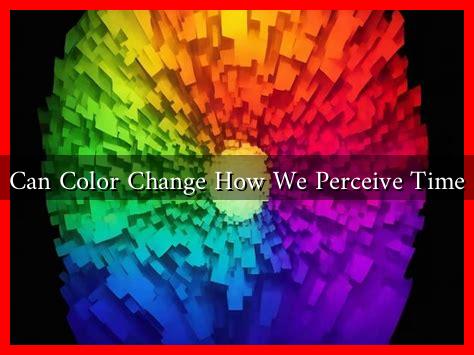-
Table of Contents
Can Color Change How We Perceive Time?
Color is an integral part of our daily lives, influencing our emotions, decisions, and even our perception of time. The relationship between color and time perception is a fascinating area of study that combines psychology, neuroscience, and art. This article explores how different colors can alter our perception of time, supported by research findings and real-world examples.
The Psychology of Color
Colors evoke specific emotions and reactions, a phenomenon well-documented in psychological studies. For instance, warm colors like red and orange are often associated with energy and excitement, while cool colors like blue and green tend to evoke calmness and tranquility. This emotional response can significantly influence how we perceive the passage of time.
- Warm Colors: Colors such as red and yellow can create a sense of urgency and speed. Studies have shown that environments dominated by warm colors can make time feel like it is passing more quickly.
- Cool Colors: In contrast, blue and green hues are linked to relaxation and can make time feel as though it is stretching out, leading to a slower perception of time.
Scientific Studies on Color and Time Perception
Research has provided compelling evidence that color can indeed affect our perception of time. A study published in the journal *Cognition* found that participants exposed to warm colors estimated time intervals as shorter compared to those in cooler environments. The researchers concluded that the emotional arousal associated with warm colors could lead to a faster perception of time.
Another study conducted by the University of California, Berkeley, examined how color affects our cognitive processing speed. The findings indicated that participants in brightly colored environments completed tasks more quickly, suggesting that vibrant colors can enhance alertness and speed up time perception.
Real-World Applications
The implications of color on time perception extend beyond academic research into practical applications in various fields:
- Marketing: Brands often use color strategically to influence consumer behavior. Fast-food restaurants frequently employ red and yellow in their branding to create a sense of urgency, encouraging quicker dining experiences.
- Interior Design: In spaces where relaxation is desired, such as spas or bedrooms, cool colors are favored to create a calming atmosphere that can make time feel more expansive.
- Work Environments: Offices designed with bright colors can enhance productivity and speed up task completion, making time feel more efficient for employees.
Case Studies: Color in Action
Several case studies illustrate the impact of color on time perception:
- Case Study 1: A fast-casual restaurant chain redesigned its interior with vibrant red and yellow accents. Post-redesign surveys indicated that customers felt they spent less time waiting for their food, leading to increased table turnover and higher sales.
- Case Study 2: A tech company revamped its office space with calming blue tones. Employee feedback revealed that they felt less rushed and more focused, resulting in improved job satisfaction and productivity.
Conclusion: The Power of Color
The interplay between color and time perception is a powerful reminder of how our environment shapes our experiences. From marketing strategies to workplace design, understanding the psychological effects of color can lead to more effective communication and enhanced well-being. As we continue to explore this fascinating relationship, it becomes clear that color is not just a visual element but a significant factor in how we perceive the world around us.
In summary, the evidence suggests that color can indeed change how we perceive time. By leveraging this knowledge, individuals and businesses can create environments that enhance productivity, improve emotional well-being, and even influence consumer behavior. For further reading on the psychology of color, you can explore resources from the Color Psychology website.

